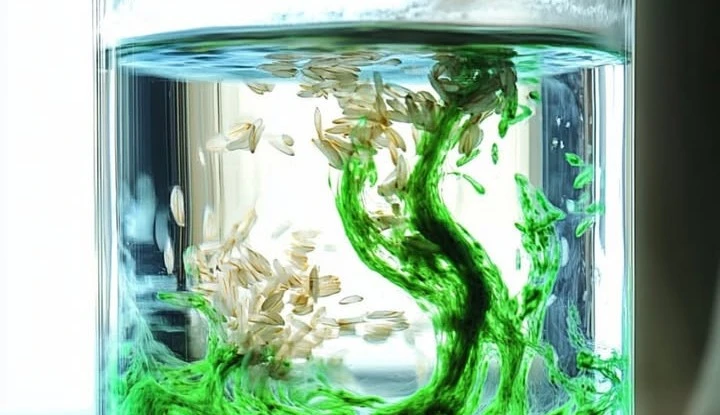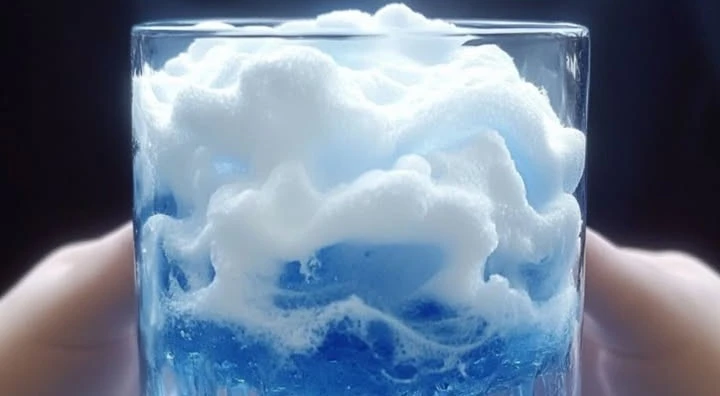Get Ready for an Exciting Science Experiment: Dancing Rice
Are you ready to embark on a fun and educational kitchen adventure? This bubbly science experiment will not only fascinate young minds but also make for an engaging family activity. The “Dancing Rice” experiment combines fun and learning, demonstrating principles of buoyancy and gas reactions. This article explores everything you need to know about this experiment, from the ingredients to the benefits it offers, and even how to store your supplies!
Table of Contents
Ingredients
To perform the Dancing Rice experiment, you will need the following simple ingredients:
- Uncooked rice (1 cup)
- A clear glass or container
- Baking soda (2 tablespoons)
- Vinegar (half a cup)
- Food coloring (optional)
- Water (enough to fill the glass halfway)
These items are common household materials, making this experiment accessible for anyone who wishes to explore the science behind it.
Instructions
Prepare the Dancing Rice experiment with these simple steps:
Prepare the Rice: Begin by placing the uncooked rice into your clear glass or container. Observe its appearance before adding any other ingredients, noting the texture and weight.
Mix Baking Soda and Water: In a separate bowl, mix the baking soda with a small amount of water to create a paste-like consistency. Stir the mixture well to ensure there are no lumps.
Add Liquid to the Container: Fill the glass halfway with water. If you choose to use food coloring for a vibrant effect, add a few drops at this stage and mix well.
Combine Ingredients: Carefully spoon the baking soda mixture into the container with rice. Let it settle for a moment.
Add Vinegar: Pour the vinegar into the glass with the baking soda and rice mixture. Watch as the chemical reaction begins, creating bubbles that will lift the rice and make it dance!
Observe: Take time to observe the rice as it dances. Enjoy the bubbling action as the carbon dioxide produced during the reaction collects under the rice, making it rise and fall.
Make sure you supervise children during this process, as it’s essential to understand the reactions taking place.
Benefits of This Craft
Engaging in this science experiment offers numerous benefits, making it an ideal educational activity for both children and adults.
Educational Value: The Dancing Rice experiment teaches children about chemical reactions, buoyancy, and density in a fun and interactive way. Learning through hands-on activities often leaves a lasting impression.
Sensory Experience: The colorful, bubbling, and tactile aspects of this experiment create a sensory experience that stimulates curiosity and engagement. Children learn better when they can see, touch, and experience the concepts firsthand.
Creativity and Exploration: Adding food coloring allows children to experiment with different colors, fostering creativity. Encouraging them to think about why the rice dances can lead to discussions about scientific principles.
Bonding Opportunity: This experiment serves as a great opportunity for parents or guardians to bond with kids. Working together to perform the experiment can foster trust and communication.
Tips for Success
To ensure your Dancing Rice experiment goes smoothly, consider these helpful tips:
Use Clear Containers: A clear glass or plastic container allows everyone to see the reaction clearly, enhancing the visual impact of the experiment.
Supervise Children: Always supervise young children during science experiments. Discuss the safety of the materials being used and the importance of following instructions.
Experiment with Ingredients: While the basic ingredients yield fantastic results, don’t hesitate to try additional items. Use different types of rice, experiment with amounts of baking soda or vinegar, or add other safe ingredients to see how they affect the outcome.
Document the Process: Encourage children to take notes or draw pictures of the experiment. Documenting results can help reinforce what they learned in a fun way.
What Does It Taste Like?
While the Dancing Rice experiment is not about taste, the ingredients can help create an interesting discussion. The rice itself remains uncooked, while the vinegar and baking soda react to produce carbon dioxide gas, which leads to the dancing effect. It’s important to remember that this experiment is primarily about the visual spectacle and the science behind the reaction, not the flavor.
How to Store
After completing the experiment, you may want to store any left-over ingredients for future use. Here’s how:
Uncooked Rice: Store any excess uncooked rice in an airtight container in a cool, dry location. It can last for a long time and can be used in other recipes or experiments.
Baking Soda and Vinegar: Keep the baking soda in a sealed container to prevent moisture from affecting its efficacy. Vinegar can be stored at room temperature in its original bottle, where it will remain useful for future experiments or cooking.
Leftover Experiment Supplies: If you have any leftover water or colored solution, it’s best to dispose of it down the sink. Clean the container thoroughly to prepare for your next science adventure.
The Dancing Rice experiment is not only a delightful and engaging activity but also serves as a valuable educational tool. It introduces fundamental scientific concepts in a way that is accessible and enjoyable for children. The visual effects capture attention and encourage curiosity, while the straightforward instructions make it easy for anyone to replicate at home.
Engaging in science experiments together can lead to memorable shared experiences, promoting learning and bonding within families. So gather your ingredients, prepare for some bubbly fun, and watch the rice dance!
FAQ
Q: What age group is this experiment suitable for?
A: This experiment is suitable for children above the age of 5, with adult supervision recommended to ensure safety and understanding.
Q: Can I use different liquids instead of vinegar?
A: While vinegar is specifically used for this experiment due to its acidity, other acidic liquids like lemon juice might work, but results can vary.
Q: Is this experiment messy?
A: The experiment can create some bubbles and liquid overflow, so it’s best to perform it in an area that can be easily cleaned or outside if the weather permits.
Q: How long does the ‘dancing’ effect last?
A: The dancing effect will last as long as the chemical reaction occurs. Once the baking soda and vinegar have fully reacted, the rice will settle back down.
Q: Can I do this experiment more than once?
A: Yes, but you will need fresh ingredients for each attempt to observe the same exciting reactions.


